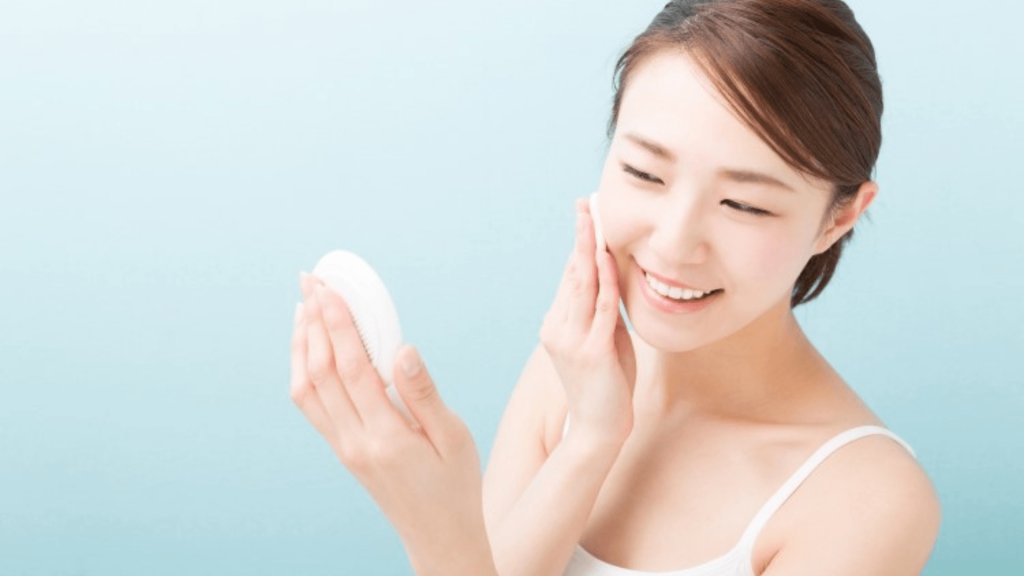일본에서 번창하는 화장품 뷰티 산업: 2023년 소비자 트렌드 살펴보기
2023년 말까지 일본의 뷰티 시장 규모는 미화 406만 2천 달러에 달할 것입니다. 소비자들은 국내외 브랜드의 최신 제품을 발견하기를 열망하고 있습니다. 이들은 기술 혁신, 개인화된 참여, 안전하고 신뢰할 수 있으며 효능이 높은 제품을 찾습니다.
소비자 트렌드와 이에 따른 비즈니스 기회에 대해 자세히 알아보세요.
2023년 뷰티 업계의 7대 소비자 트렌드
1- 기술 중심의 아름다움
일본 소비자들은 정교하고 제품과 그 효과에 대해 잘 알고 있습니다. 또한 자신의 피부 타입에 맞는 제품을 찾습니다. 바람직한 스킨케어 아이템은 다용도로 사용하거나 한 가지 용도로만 사용할 수 있도록 설계된 제품입니다. 일본 살롱 브랜드 레이디 바이오는 건조하고 여드름이 나는 피부를 개선하는 데 도움이 되는 다용도 수성 미스트로 성공을 거두었습니다. 셀레이아는 두피 케어에 특화된 또 다른 일본 브랜드입니다. 이 브랜드는 마이크로 니들 기술을 사용하여 두피에 세럼을 침투시킵니다. 따라서 피부에 효과적으로 영향을 미치고 상태를 개선하는 혁신적인 제품은 기업에게 새로운 시장 기회로 떠오르고 있습니다.
2- 물질로서의 CBD
일본의 Z세대 소비자들 사이에서 뷰티 제품의 성분으로 CBD(칸나비디올)의 인기가 높아지고 있습니다. 일본에서는 법률이 엄격하기 때문에 시장은 여전히 발전하고 있습니다. 예를 들어, 미고토의 스고이는 긴장을 완화하는 데 도움이 되는 에센셜 CBD 오일을 제공합니다. 일본 브랜드는 이러한 제품의 대부분을 유럽이나 미국에서 수입합니다. CBD 상품에 대한 수요가 증가함에 따라 해외 브랜드에게는 비즈니스 기회가 될 수 있습니다.

3- 펨케어 및 펨테크
이 카테고리는 일본 뷰티 업계에서 성장하고 있는 분야입니다. 이 카테고리는 여성과 여성의 전반적인 웰빙을 타깃으로 합니다. 영양 보충제, 윤활제, 친밀한 세척제, 로션 등 CBD를 함유하거나 함유하지 않은 제품들은 이 카테고리에서 브랜드에게 다양한 가능성을 보여줍니다. 또한 펨케어는 폐경기, 월경, 임신 기간 동안 여성의 건강을 개선합니다. 여기에는 여성용 섹스 토이도 포함됩니다. 페르마타는 2019년에 온라인 판매를 시작하여 2020년에 리테일로 진출한 펨테크 브랜드입니다. 제품 범위에는 생리 속옷, 섹스 토이 및 기타 여성 관련 품목이 포함됩니다. 여성 전용 제품에 대한 시장의 반응은 느린 편입니다. 하지만 점차 수요가 증가하고 있으며 잠재력을 보여주고 있습니다. 예를 들어, 드럭스토어 마츠모토 키요시는 2021년부터 30개 매장에 1인 가구를 타깃으로 한 뷰티 제품인 ' 마츠키요 랩 '이라는 펨케어 상품을 배치하기 시작했습니다.
4- 제품 및 브랜드 신뢰성
소비자에게 제품의 안전성, 품질, 성능은 그 어느 때보다 중요한 요소입니다. 경쟁을 위해 로레알과 같은 브랜드는 스킨 케어, 헤어 케어, 피부 기기 등 더 뛰어난 효능을 제공하는 제품에 투자하고 있습니다. 또한 2022년 코스메 순위는 키엘의 울트라 페이스 크림과 같이 지난 몇 년간 인기 있었던 제품들이 주를 이룹니다. 이 사실은 일본 소비자들이 이미 효과가 입증된 오래된 인기 제품을 선호한다는 점을 강조합니다. 브랜드 입장에서는 제품 및 주장의 진위 여부와 효능에 집중하는 것이 중요합니다. 또한, 올해에는 새로운 제품을 개발하는 대신 핵심 전문성에 더 집중하여 제품 라인을 구성할 수 있습니다.
5- 지속 가능성
지구의 미래 성장에 대한 소비자들의 우려가 커지면서 브랜드는 환경 문제를 해결할 방법을 모색하고 있습니다. 시세이도와 같은 일부 브랜드는 친환경 포장재를 개발하여 폐기물을 최소화하는 데 초점을 맞추고 있습니다. 다른 접근 방식으로는 유기농 재료를 소싱하거나 공정 무역을 지원하는 방법이 있습니다. 이는 소비자의 현재 관심사에 부합하는 지속 가능한 제품을 만드는 사람들에게 비즈니스 기회로 이어집니다.
6- 한 가지 기능에 집중
전 세계적으로 코로나19가 유행하는 동안 일본인들은 마스크를 착용했습니다. 그 결과, 많은 소비자들이 마스크가 입술을 대부분 가리기 때문에 입술보다는 눈썹을 강조하기로 결정했습니다. 마스크 착용 의무화가 해제되면서 일본의 Z세대 소비자들은 자신을 표현하는 데 도움이 되는 제품을 찾기 시작했습니다. 올해는 눈이나 입술에 화사한 컬러와 부드러운 질감의 제품을 사용할 가능성이 높습니다. 일본에서 성공하려면 시장과 소비자의 문화적 뉘앙스를 이해하는 것이 필수적입니다.
일본에 진출한 해외 브랜드의 성공 전략에 대해 자세히 알아 보세요.
7- 초개인화된 쇼핑 경험
일본 소비자들은 끊임없는 혁신의 압박 속에서 다양하고 경쟁이 치열한 뷰티 시장을 즐길 수 있습니다. 다양한 브랜드의 제품을 선택할 수 있는 만큼 자신에게 가장 적합한 제품을 알고자 하는 고객들의 요구가 높아지고 있습니다. 브랜드는 온라인 설문조사, 일대일 상담, 인공지능 피부 분석, AR 필터 체험, 각 고객의 피부 타입에 맞는 맞춤형 제품 등을 통해 고객과 개별화된 커뮤니케이션을 할 수 있습니다. 예를 들어, 에스티 로더는 일본에서 온라인 및 매장 상담을 통해 고객과 소통하고 있습니다. 또한 구독 박스나 특별 리워드를 통해 브랜드 충성도를 구축할 수도 있습니다. 고객에 대해 더 많이 알수록 더 나은 서비스를 제공하고 고객과 유대감을 형성할 수 있습니다. 이는 일본 뷰티 기업의 경쟁 우위 중 하나가 될 수 있습니다.
결론
2023년 일본 소비자들은 브랜드와 제품에서 진정성과 혁신을 찾을 것입니다. 개인화된 커뮤니케이션, 지속 가능성, 고성능의 다용도 제품으로 이 시장에 진출할 수 있습니다. CBD와 펨케어는 규모는 작지만 성장하고 있는 유망한 카테고리입니다. 이러한 트렌드를 알면 시장의 현재 역학을 이해하고 활용하는 데 도움이 될 수 있습니다.
뷰티 브랜드를 일본으로 확장하기 위한 지원이 필요하신가요?
COVUE는 비전을 전략화하고 실행하는 일본 내 운영 파트너입니다. 저희 팀의 사명은 가능한 가장 효과적인 방법으로 귀사의 목표를 지원하여 일본에서의 성공을 확대하는 것입니다. 수입 규정 준수, 물류, 이커머스 설정 등을 지원합니다.


